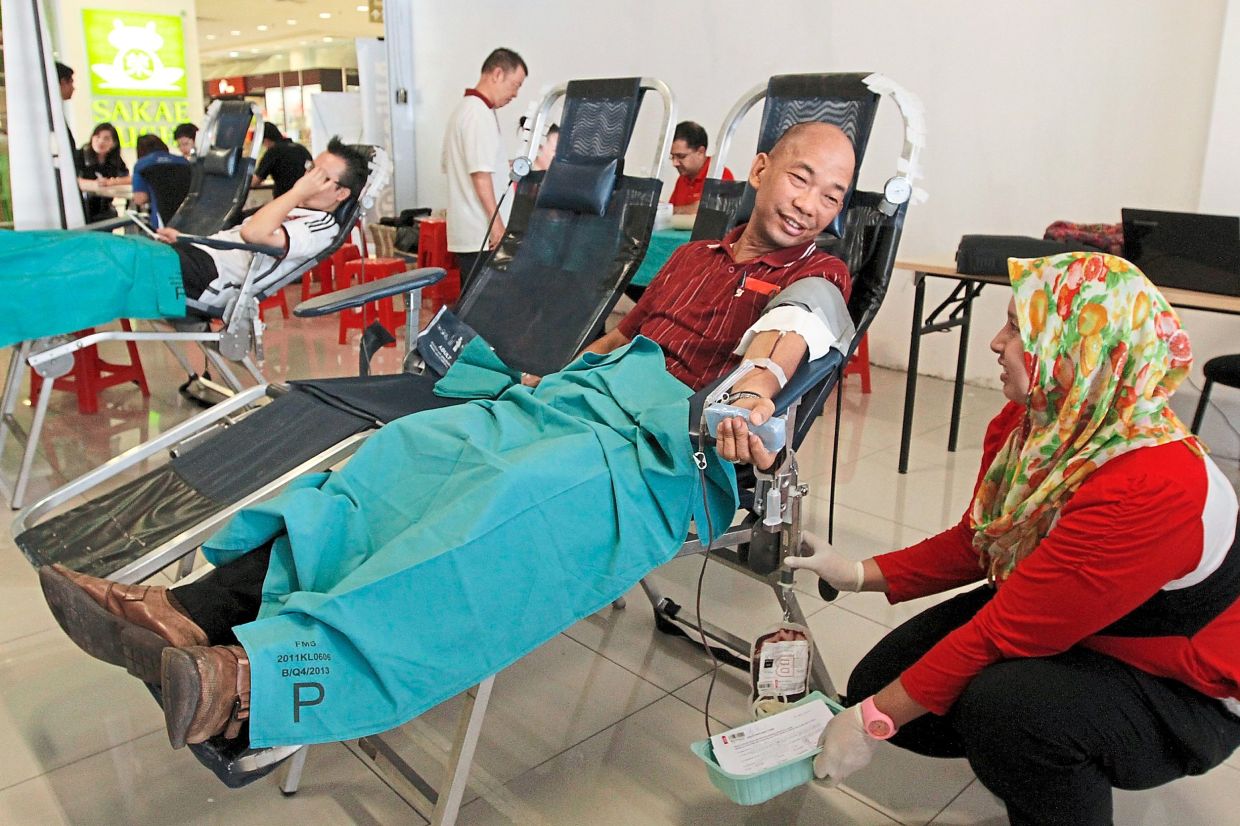Blood
What happens to your body when you donate blood
The act of donating blood is a noble and selfless gesture, but it’s natural to wonder how your body responds to this generous act.
Many individuals, even regular donors, have concerns about the effects of blood donation on their health.
In this column, we will delve into the science behind blood donation, exploring the guidelines that ensure donor safety and shedding light on the remarkable processes that enable your body to recover and regenerate the blood you’ve given away.
Before delving into the intricacies of blood donation, let’s start with some essential facts.
The human body typically contains around five litres of blood.
During a standard whole blood donation, only about 450 millilitres is collected.
However, it’s important to note that not everyone can donate the full amount, as eligibility depends on factors like height and weight.
Specialised donations, such as plasma and platelets, may have different maximum limits depending on individual factors like blood count, height and weight.
Furthermore, the frequency of blood donations is strictly regulated, with intervals ranging from 56 days between most whole blood donations to seven days for platelets, four weeks for plasma and four months for double red blood cell donations.
These measures are in place to ensure the safety and well-being of donors.
Effects of losing blood
One of the most common side effects experienced by blood donors is a feeling of tiredness or fatigue following the donation.
This effect is particularly noticeable after whole blood and double red blood cell donations because they result in a temporary reduction in red blood cell levels.
Red blood cells are responsible for carrying oxygen throughout the body.
Therefore, a decrease in their volume can lead to a sensation of tiredness as less oxygen reaches the body’s tissues.
However, it’s important to emphasise that this fatigue is temporary and usually improves within a few days as the body starts to replenish its supply of red blood cells.
To help your body recover after donating blood, do:
- Enjoy a light refreshment and rest a few minutes at the recovery area.
- Avoid alcohol and drink an additional four 240ml glasses of fluids over the next 24 hours.
- Refrain from any strenuous exercise or heavy lifting for the rest of the day.
- Eat iron-rich foods such as leafy green vegetables, red meat, raisins and dates as they help the production of red blood cells.
In contrast, the temporary reduction in platelets and plasma levels following specialised blood donation typically has little to no impact on a donor’s daily life.
How your body recovers
The human body possesses remarkable regenerative capabilities, allowing it to replace the blood cells lost during donation within days to weeks, depending on the type of donation.
Different blood components are replenished at varying rates due to distinct bodily processes.
> Red blood cells
After donating red blood cells (whether through whole blood or double red blood cell donations), specialised cells in the body detect the lowered oxygen levels in the bloodstream and trigger the production of a protein called erythropoietin.
Erythropoietin acts as a messenger, signalling the bone marrow to generate new red blood cells.
While red blood cells are replaced rapidly after donation, it generally takes four to eight weeks to fully replenish all the red blood cells lost during a whole blood donation.
Taking iron supplements can expedite recovery since iron stores and haemoglobin, which is the protein responsible for carrying oxygen in our red blood cells, are closely linked.
It is advisable for whole blood donors to take a low dose of iron (e.g. 18 milligrammes) for 60 days after donation to ensure complete recovery.
> Plasma
Plasma, which constitutes 55% of your blood volume, is primarily composed of more than 90% water.
Therefore, it is essential to hydrate after donating blood.
Your body’s chemical processes in the brain and kidneys detect low blood volume due to dehydration and initiate mechanisms to retain water, including reducing urine output.
As you rehydrate to restore plasma’s water content, your body also works to regenerate the various proteins it contains, including clotting factors and antibodies.
Plasma replenishes immediately and should return to normal levels within a few days.
> Platelets
Platelets follow a similar pattern to red blood cells.
When low platelet levels are detected, a hormone called thrombopoietin is produced, signalling the bone marrow to increase platelet production.
Platelet counts typically recover within a week after donation.
In conclusion, while the processes involved in regenerating blood components may seem complex, they are typically manageable for most individuals.
However, for those in need of bone marrow transplants, individuals suffering from severe anaemia, or those with other serious medical conditions, the challenges of these processes underscore the importance of blood donations.
As a healthy donor, you can rest assured that your contribution will be regenerated, even as it brings hope and renews life for those in need.
Your selfless act of donating blood truly makes a significant difference in the lives of others.
Datuk Dr Nor Ashikin Mokhtar is a consultant obstetrician and gynaecologist, and a functional medicine practitioner. For further information, email starhealth@thestar.com.my. The information provided is for educational and communication purposes only, and it should not be construed as personal medical advice. Information published in this article is not intended to replace, supplant or augment a consultation with a health professional regarding the reader’s own medical care. The Star does not give any warranty on accuracy, completeness, functionality, usefulness or other assurances as to the content appearing in this column. The Star disclaims all responsibility for any losses, damage to property or personal injury suffered directly or indirectly from reliance on such information.

